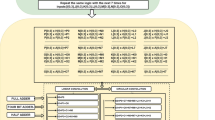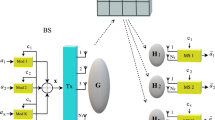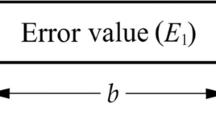Abstract
Polar codes are the popular error-correcting codes and increased their attention after being adopted for the control channel in fifth-generation new radio (5G NR) standards. An efficient hardware architecture for polar code is often required with minimal encoding and decoding complexity. This work proposes a Multi-folded pipelined architecture and analyzes the performance in terms of latency, hardware utilization, and throughput. The designed architecture has two folded architectures interconnected in parallel to output 4-bits simultaneously. Folding transformations are used to reduce the number of idle processing elements (PEs) in every stage leading to the effective utilization of PE. Precomputation is effectively utilized in the PE to reduce the critical path delay, which improves the maximum operating frequency. A Loop-based shifting register (LSR) is employed to reduce the number of registers used. The analytical model for latency and utilization rate has been derived from the scheduling of the proposed architecture. The proposed design shows 63–71% higher hardware utilization than conventional semi-parallel design for code length \(N=512\) suitable for the physical downlink control channel (PDCCH) in 5G NR. The architecture is also implemented in Virtex-6, ZYNQ-Ultrascale+ MPSoC device for maximum supported code length of 5G NR, i.e., up to \( 2^{10} \), compared with the existing decoders. The proposed design also has the benefit of lesser look-up-table (LUT) consumption and zero random-access-memory (RAM) usage with some additional registers, making it suitable for resource-constraint applications.










Similar content being viewed by others
References
Arikan E 2009 Channel Polarization: A Method for Constructing Capacity-Achieving Codes for Symmetric Binary-Input Memoryless Channels. IEEE Transactions on Information Theory. 55(7): 3051–3073. https://doi.org/10.1109/TIT.2009.2021379
3rd Generation Partnership Project 2018 Technical Specification Group Radio Access Network; NR; Multiplexing and channel coding (Release 15)
Arikan E and Telatar E 2009 On the rate of channel polarization. In: IEEE International Symposium on Information Theory; Seoul. 1493-1495. https://doi.org/10.1109/ISIT.2009.5205856.
Hussami N, Korada S B and Urbanke R 2009 Performance of polar codes for channel and source coding. In: IEEE International Symposium on Information Theory; Seoul.1488-1492. https://doi.org/10.1109/ISIT.2009.5205860.
Goela N, Korada S B and Gastpar M 2010 On LP decoding of polar codes. In: IEEE Information Theory Workshop. 1-5, https://doi.org/10.1109/CIG.2010.5592698.
Eslami A and Pishro-Nik H 2011 A practical approach to polar codes. In: IEEE International Symposium on Information Theory Proceedings. 16-20. https://doi.org/10.1109/ISIT.2011.6033837.
Vangala H, Viterbo E and Hong Y 2014 A new multiple folded successive cancellation decoder for polar codes. IEEE Information Theory Workshop. 381–385: . https://doi.org/10.1109/ITW.2014.6970858
Vangala H, Viterbo E and Hong Y 2014 Improved multiple folded successive cancellation decoder for polar codes. XXXIth URSI General Assembly and Scientific Symposium (URSI GASS). 1–4: . https://doi.org/10.1109/URSIGASS.2014.6929238
Pamuk A 2011 An FPGA implementation architecture for decoding of polar codes. In: 8th International Symposium on Wireless Communication Systems; Aachen. 437-441. https://doi.org/10.1109/ISWCS.2011.6125398.
Leroux C, Tal I, Vardy A and Gross W J 2011 Hardware architectures for successive cancellation decoding of polar codes. In: IEEE International Conference on Acoustics, Speech and Signal Processing; Prague. 1665-1668. https://doi.org/10.1109/ICASSP.2011.5946819.
Tal I and Vardy A 2011 List decoding of polar codes. In: 2011 IEEE International Symposium on Information Theory Proceedings. 1-5. https://doi.org/10.1109/ISIT.2011.6033904.
Yuan B and Parhi K K 2014 Successive cancellation list polar decoder using log-likelihood ratios. In: 48th Asilomar Conference on Signals, Systems and Computers,Pacific Grove,CA. 548-552. https://doi.org/10.1109/ACSSC.2014.7094505.
Xia C, Chen J, Fan Y, Tsui C, Jin J, Shen H and Li B 2018 A High-Throughput Architecture of List Successive Cancellation Polar Codes Decoder With Large List Size. IEEE Transactions on Signal Processing. 66(14): 3859–3874. https://doi.org/10.1109/TSP.2018.2838554
Leroux C, Raymond A J, Sarkis G and Gross W J 2013 A Semi-Parallel Successive-Cancellation Decoder for Polar Codes. IEEE Transactions on Signal Processing. 61(2): 289–299. https://doi.org/10.1109/TSP.2012.2223693
Dinesh kumar D and Shantha Selvakumari R, 2021 Semi-parallel polar decoder architecture using shift-register-based partial-sum computation for 5G mobile communications. Materials Today: Proceedings. 62(7): 4985–4990. https://doi.org/10.1016/j.matpr.2022.04.171
Raymond A J and Gross W J 2014 A Scalable Successive-Cancellation Decoder for Polar Codes. IEEE Transactions on Signal Processing. 62(20): 5339–5347. https://doi.org/10.1109/TSP.2014.2347262
Zhang C, Yuan B and Parhi K K 2012 Reduced-latency SC polar decoder architectures. In: IEEE International Conference on Communications; Ottawa, ON. 3471-3475. https://doi.org/10.1109/ICC.2012.6364209.
Yuan B and Parhi K K 2014 Low-Latency Successive-Cancellation Polar Decoder Architectures Using 2-Bit Decoding. IEEE Transactions on Circuits and Systems I: Regular Papers. 61(4): 1241–1254. https://doi.org/10.1109/TCSI.2013.2283779
Geethu S B, Lakshmi R M, Lakshminarayanan G and Mathini S 2019 Low-complex processing element architecture for successive cancellation decoder. Integration the VLSI Journal. 66: 80–87. https://doi.org/10.1016/j.vlsi.2019.01.005
Giard P, Sarkis G, Thibeault C and Gross W J 2015 237 Gbit/s unrolled hardware polar decoder. Electronics Letters. 51(10): 762–763. https://doi.org/10.1049/el.2014.4432
Zhang X, Yan X, Zeng Q, Cui J, Cao N and Higgs R 2018. High-Throughput Fast-SSC Polar Decoder for Wireless Communications. Wireless Communications and Mobile Computing; Article ID 7428039, 10 pages. https://doi.org/10.1155/2018/7428039
Giard P, Sarkis G, Thibeault C and Gross W J 2015 A 638 Mbps low-complexity rate 1/2 polar decoder on FPGAs. In: IEEE Workshop on Signal Processing Systems; Hangzhou. 1-6. https://doi.org/10.1109/SiPS.2015.7345007.
Ercan F, Condo C and Gross W J 2017 Reduced-memory high-throughput fast-SSC polar code decoder architecture. In: IEEE International Workshop on Signal Processing Systems; Lorient. 1-6. https://doi.org/10.1109/SiPS.2017.8110014.
Ercan F, Tonnellier T, Condo C and Gross W J 2019 Operation Merging for Hardware Implementations of Fast Polar Decoders. Journal of Signal Processing Systems. 91: 995–1007. https://doi.org/10.1007/s11265-018-1413-4
Sarkis G, Giard P, Vardy A, Thibeault C and Gross W J 2014 Fast Polar Decoders: Algorithm and Implementation. IEEE Journal on Selected Areas in Communications. 32(5): 946–957. https://doi.org/10.1109/JSAC.2014.140514
Dizdar O and Arikan E 2016 A High-Throughput Energy-Efficient Implementation of Successive Cancellation Decoder for Polar Codes Using Combinational Logic. IEEE Transactions on Circuits and Systems I: Regular Papers. 63(3): 436–447. https://doi.org/10.1109/TCSI.2016.2525020
Zhang C, Yang J, You X and Xu S 2015. Pipelined implementations of polar encoder and feed-back part for sc polar decoder. IEEE International Symposium on Circuits and Systems (ISCAS). 3032-3035
Tan W, Wang A, Xu Y and Lao Y 2020 Area-Efficient Pipelined VLSI Architecture for Polar Decoder. IEEE Computer Society Annual Symposium on VLSI (ISVLSI). 352–357: . https://doi.org/10.1109/ISVLSI49217.2020.00071
Tan, Weihang, "VLSI Architecture for Polar Codes Using Fast Fourier Transform-Like Design" (2020). All Theses. 3369
Ayinala M, Brown M, and Parhi K K 2012 Pipelined parallel fft architectures via folding transformation. IEEE Transactions on Very Large Scale Integration (VLSI) Systems. 20( 6). 1068-1081
Zhang C and Parhi K K 2013 Low-latency sequential and overlapped architectures for successive cancellation polar decoder. IEEE Transactions on Signal Processing. 61(10): 2429–2441. https://doi.org/10.1109/TSP.2013.2251339
Shrestha R and Sahoo A 2018 High-speed and hardware-efficient successive cancellation polar-decoder. IEEE Transactions on Circuits and Systems II: Express Briefs. 66(7): 1144–1148
Dinesh kumar D and Shantha selvakumari R 2022 Improving utilization rate of semi-parallel successive cancellation architecture for polar codes using 2-bit decoding. Turkish Journal of Electrical Engineering and Computer Sciences. 30(3): Article 16. https://doi.org/10.3906/elk-2105-175.
Liang X, Yang J, Zhang C, Song W and You X 2016 Hardware Efficient and Low-Latency CA-SCL Decoder Based on Distributed Sorting. IEEE Global Communications Conference (GLOBECOM).1-6. https://doi.org/10.1109/GLOCOM.2016.7841865.
Zhou H, Liang X, Li L, Zhang Z, You X and Zhang C 2019 Segmented Successive Cancellation List Polar Decoding with Tailored CRC. Journal of Signal Processing System. 91: 923–935. https://doi.org/10.1007/s11265-018-1425-0
Petrović V L, Marković M M, Mezeni D M E, Saranovac L V and Radošević A 2020 Flexible High Throughput QC-LDPC Decoder With Perfect Pipeline Conflicts Resolution and Efficient Hardware Utilization. IEEE Transactions on Circuits and Systems I: Regular Papers. 67(12): 5454–5467. https://doi.org/10.1109/TCSI.2020.3018048
Dinesh kumar D and Shantha Selvakumari R, 2022 Performance analysis of Min-Sum based LDPC decoder architecture for 5G new radio standards. Materials Today: Proceedings. 62(7): 4965–4972. https://doi.org/10.1016/j.matpr.2022.03.693
Acknowledgements
The authors would like to thank SERB, DST for their financial support towards procuring EDA tools and hardware for this research under TARE scheme Grant number: TAR/2020/000001. The authors also thank Dr.Radhakrishna Ganti, Electrical Engineering IITM, for providing access to the 5G Lab and extending the necessary facilities.
Author information
Authors and Affiliations
Contributions
D.Dinesh Kumar: Conception, Methodology, Formal analysis, Software, Drafting, Investigation, Validation, editing the manuscript, R.Shantha Selvakumari: Investigation, Validation, Reviewing the manuscript critically for important intellectual content, Supervision.
Corresponding author
Ethics declarations
Conflict of interest
The authors declare that they have no known competing financial interests or personal relationships that could have appeared to influence the work reported in this paper.
Rights and permissions
Springer Nature or its licensor (e.g. a society or other partner) holds exclusive rights to this article under a publishing agreement with the author(s) or other rightsholder(s); author self-archiving of the accepted manuscript version of this article is solely governed by the terms of such publishing agreement and applicable law.
About this article
Cite this article
D, D.K., R, S.S. Performance analysis of multi-folded pipelined successive cancellation decoder architecture for polar code. Sādhanā 49, 144 (2024). https://doi.org/10.1007/s12046-024-02503-1
Received:
Revised:
Accepted:
Published:
DOI: https://doi.org/10.1007/s12046-024-02503-1




